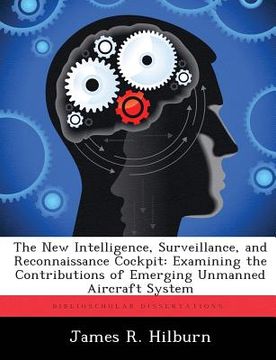Compartir
The New Intelligence, Surveillance, and Reconnaissance Cockpit: Examining the Contributions of Emerging Unmanned Aircraft System (en Inglés)
James R. Hilburn
(Autor)
·
Biblioscholar
· Tapa Blanda
The New Intelligence, Surveillance, and Reconnaissance Cockpit: Examining the Contributions of Emerging Unmanned Aircraft System (en Inglés) - Hilburn, James R.
S/ 252,56
S/ 505,11
Ahorras: S/ 252,56
Elige la lista en la que quieres agregar tu producto o crea una nueva lista
✓ Producto agregado correctamente a la lista de deseos.
Ir a Mis Listas
Origen: Estados Unidos
(Costos de importación incluídos en el precio)
Se enviará desde nuestra bodega entre el
Martes 13 de Agosto y el
Jueves 22 de Agosto.
Lo recibirás en cualquier lugar de Perú entre 2 y 5 días hábiles luego del envío.
Reseña del libro "The New Intelligence, Surveillance, and Reconnaissance Cockpit: Examining the Contributions of Emerging Unmanned Aircraft System (en Inglés)"
The purpose of this paper is to examine how unmanned Intelligence, Surveillance, and Reconnaissance capabilities must change in order to meet the long term requirements of U.S. war-fighters. Contemporary non-strike capable Unmanned Aerial Vehicles and strike capable Unmanned Combat Aerial Vehicles (UCAVs) cannot match the speed and payload capacity of modern manned platforms; however there are significant changes on the horizon. This research paper addresses this subject using the evaluation methodology, analyzing five areas necessary for continued Unmanned Aircraft System (UAS) progress: UAS force structure, persistent coverage, asset sensor packages, improved lethality, and stealth developments. While this paper emphasizes continued developments in unmanned capabilities, the first step that must take place in the development process is the minimization of procurement and employment duplicative efforts. For example, the U.S. Army and U.S. Air Force currently have similar yet separate UCAV programs, and both continue to research the development of comparable capabilities to meet war-fighter needs. The introduction of an UAS Executive Agent will allow the U.S. military to focus on UAS design improvements, and will also contribute to necessary changes in emerging UAS programs. With an established joint interdependence, the Department of Defense (DoD) can then fully pursue new technological advances in unmanned capabilities - persistence, modular sensors, lethality, and stealth. Critical UAS research could potentially lead to the development of long endurance, low observable assets capable of fulfilling multiple war-fighter collection requirements, while providing a more robust strike capacity. By focusing on these elements, the DoD can create a more capable and lethal unmanned capacity to meet current and emerging war-fighter needs, through evolutionary and revolutionary research and development.

